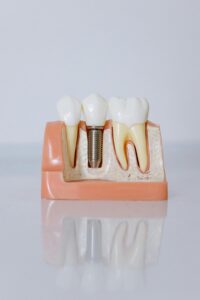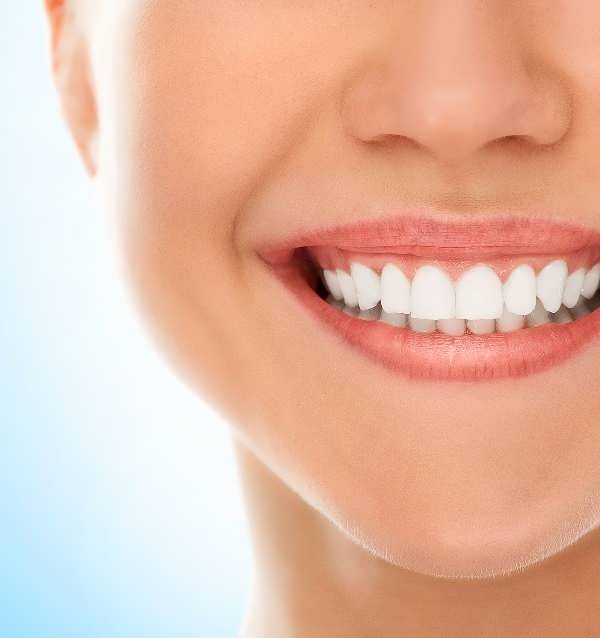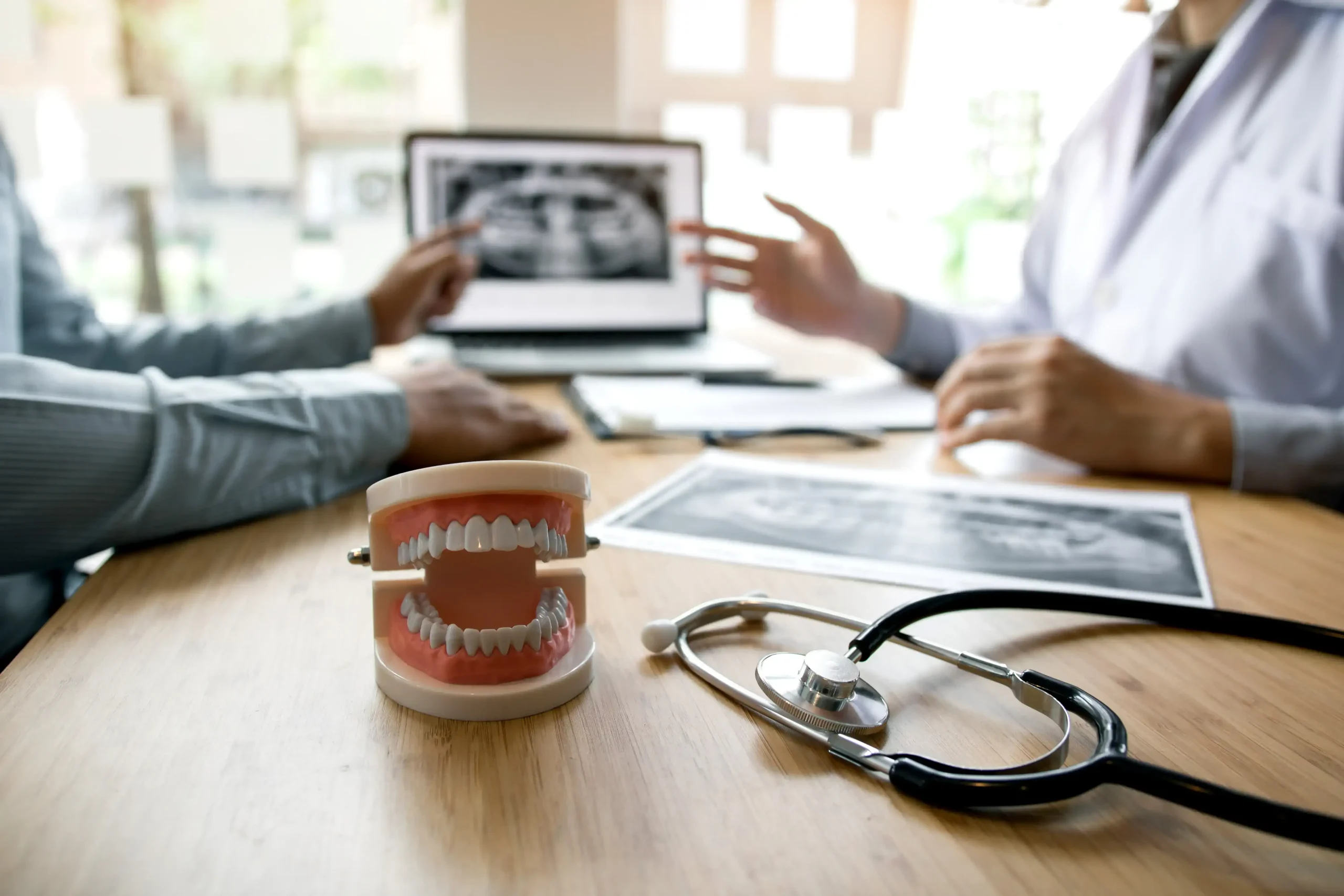Table of Contents
Achieve a Radiant Smile with Professional Teeth Whitening in Scarborough
A radiant smile not only boosts your confidence but also influences the impressions you make on others.
One effective way to achieve a radiant smile is through professional teeth whitening. But before you consider any cosmetic procedures, it’s important to ensure your teeth are healthy. Read our blog post on how to know if your teeth are healthy for more information
Understanding Teeth Whitening
What is Teeth Whitening?
Teeth whitening is a popular dental procedure designed to restore the natural colour of your teeth. It can effectively remove stains caused by food, beverages, smoking, aging, or certain medications.
Professional Teeth Whitening Vs At-Home Whitening Kits
While at-home kits may seem convenient, they often fall short in delivering the desired results. Improper use could even lead to gum irritation or tooth sensitivity.
On the other hand, professional teeth cleaning and whitening conducted by trained clinicians ensures safety and delivers more noticeable results. Learn more about our Teeth Cleaning services in Scarborough
Conversely, professional teeth whitening conducted by trained clinicians ensures safety and delivers more noticeable results. Learn more about our Teeth Whitening services.
The Top 5 Benefits of Professional Teeth Whitening
Faster Results
Professional teeth whitening at Dorset Dental provides quicker results than at-home methods. A single session can yield significant whitening results that could take weeks with over-the-counter products.
Safer Treatment
Our dentists protect your gums and teeth during the whitening process. They use high-quality materials and techniques to minimize risks, something challenging to achieve with at-home kits.
More Effective
Professional teeth whitening can tackle even stubborn, deep stains. Plus, the results last longer than those from at-home kits, making it a more cost-effective choice in the long run.
Customized Treatment
Our dentists at Dorset Dental can tailor the treatment to your specific needs and goals. This ensures that you get the exact level of whiteness you desire.
Confidence Boost
A brighter smile can dramatically enhance your self-confidence. Countless patients at Dorset Dental in Scarborough have experienced this transformative effect firsthand. Discover how cosmetic dentistry can change your life for the better
Why Choose Dorset Dental as your Teeth Whitening Clinic?
Benefits of Local Treatment at Dorset Dental
Choosing local treatment at Dorset Dental offers several advantages. You receive personalized care from dental professionals familiar with your oral history.
Moreover, our team uses the most advanced teeth whitening technology, such as Opalescence Whitening, to provide safe and efficient treatment right here in Scarborough.
Conclusion: Opt for Professional Teeth Whitening for a Bright, White Smile
Professional teeth whitening offers several benefits over at-home kits. It delivers faster, safer, and more effective results. Plus, with customized treatment from Dorset Dental, you can achieve a confidence-boosting smile.
Choose professional teeth whitening at Dorset Dental in Scarborough to discover the transformative power of a bright, white smile.
Key Takeaways
- Professional Over DIY: Professional teeth whitening at Dorset Dental in Scarborough is safer and more effective than at-home kits. It ensures proper protection of gums and teeth during the process and delivers more noticeable results.
- Quick and Effective: Professional teeth whitening provides faster results, often in a single session, and can tackle even stubborn, deep stains. The results also last longer than those from at-home kits.
- Customized Treatment: The treatment at Dorset Dental is tailored to the specific needs and goals of the patient, ensuring the desired level of teeth whiteness.
- Boosts Confidence: A brighter, whiter smile achieved through professional teeth whitening can dramatically enhance self-confidence.
- Local Treatment Benefits: Choosing local treatment at Dorset Dental offers personalized care from dental professionals familiar with your oral history, using advanced teeth whitening technology like Opalescence Whitening.

DONT'T DELAY BOOK TODAY!
The Scarborough Dentist You Can Trust 🦷
Book your teeth whitening appointment today and experience a radiant smile like never before!
Latest Posts

Lost a Tooth During Black Friday Shopping? What to Do — and How Dorset Dental Can Help
Black Friday shopping in Scarborough can be hectic. With crowded stores, tight spaces, and the rush to snag the best deals, accidents happen — including unexpected dental injuries. If you end up with a knocked-out tooth, knowing what to do in the moment can make all the difference. As your trusted Scarborough Dentist and Family Dentist, Dorset Dental is here to guide you through the steps and provide fast, reliable Emergency care when you need it most. How Does a Black Friday Accident Lead to a Knocked-Out Tooth? You’d be surprised how often it happens: A sudden elbow in a packed checkout line Slipping on a wet mall floor A shopping cart collision Rushing during door-crasher sales No matter how it occurs, a knocked-out tooth is a true dental emergency — but with quick action, the tooth may still be saved. What To Do Immediately After a Tooth Gets Knocked Out 1. Stay Calm — Every Minute Counts Your best chance of saving the tooth is to see a dentist near me within 60 minutes. 2. Locate the Tooth Pick it up by the crown only. Avoid touching the root, as this can damage delicate tissues. 3. Rinse Carefully If the tooth is dirty, rinse briefly with milk or saline.Do not scrub or use soap. 4. Try to Put the Tooth Back Gently place it back in the socket and bite down softly on gauze.This helps preserve the root. 5. Keep It Moist If Reinsertion Isn’t Possible Place the tooth in: Milk A tooth preservation kit Inside your cheek Never let it dry out. 6. Call Dorset Dental Immediately We reserve space for Emergency dental visits.Call 416-261-2946 while you are on the way. How Dorset Dental Treats a Knocked-Out Tooth At Dorset Dental — your community Scarborough Dentist — we will assess the tooth and determine the best treatment: ✔ Reimplantation If the tooth is viable, we can carefully secure it back in place. ✔ Splinting We stabilize the tooth so it can heal properly over the coming weeks. ✔ Root Canal Treatment Often recommended after reimplantation to ensure long-term success. ✔ Replacement Options If the tooth cannot be saved, our Family Dentist team offers: Dental implants Bridges Cosmetic restorations We’ll help you choose the option that best restores your smile. Why Choose Dorset Dental in Scarborough for Emergency Care? Trusted Family Dentist serving the Scarborough Bluffs community Fast, reliable Emergency dental appointments Modern technology Compassionate, experienced team Convenient location at 119 Dorset Road Whether you’re searching for a dentist near me or need urgent help, Dorset Dental is here to support you. Final Thoughts A Black Friday shopping mishap doesn’t have to mean losing your smile. Quick action — and a trusted Scarborough Dentist — can make all the difference. If you or a loved one experiences a dental Emergency, call Dorset Dental right away at 416-261-2946. Our team is ready to help you get back to smiling with confidence. 0/5 (0 Reviews)

How a Dental Cleaning Supports Heart Health — And Why You Should Book Before Year-End
Most people know that a Dental Cleaning helps keep teeth bright and gums healthy — but many don’t realize it can also help protect your heart health. At Dorset Dental, your trusted Scarborough Dentist, we care about your oral health and your overall well-being. With the end of the year approaching, now is the perfect time to schedule your cleaning and maximize your dental insurance before your benefits reset. The Mouth–Heart Connection Your oral health and heart health are deeply linked. Research shows that gum disease (periodontal disease) is associated with an increased risk of heart problems, including heart disease, clogged arteries, and stroke. Here’s why: 1. Inflammation Travels Gum disease causes inflammation in the mouth. When untreated, that inflammation can spread through the bloodstream and contribute to inflammation in blood vessels — a major risk factor for cardiovascular disease. 2. Bacteria Enter the Bloodstream Harmful bacteria from infected gums can enter the bloodstream and attach to blood vessels, potentially contributing to plaque buildup and reduced blood flow. 3. Shared Risk Factors Lifestyle factors like poor diet, smoking, and stress affect both gum health and heart health. This makes routine dental care essential for your overall well-being. Why Regular Dental Cleanings Matter A professional Dental Cleaning removes plaque and tartar buildup that you cannot eliminate with brushing or flossing alone. Regular cleanings help: Reduce gum inflammation Prevent gum disease Lower harmful oral bacteria Promote healthier blood vessels and circulation At Dorset Dental, we provide gentle, thorough cleanings to help patients from Scarborough, the Bluffs, and surrounding communities maintain excellent oral and overall health. Use Your Dental Insurance Before It Expires Most insurance plans reset on January 1st — meaning unused benefits do not carry forward. Booking your dental cleaning now helps you: Maximize your dental coverage Prevent gum disease and support heart health Avoid the end-of-year rush and limited availability Start the new year with a clean, healthy smile If you haven’t used your 2025 cleaning or exam benefits yet, now is the best time to book. Visit Your Trusted Scarborough Dentist — Dorset Dental Whether you’re in Scarborough, the Bluffs, or nearby communities, Dorset Dental is here to support your health with comprehensive care and comfortable visits. 📞 Call us: 416-261-2946📍 119 Dorset Road, Scarborough, ON M1M 2S9💻 Book online anytime! 0/5 (0 Reviews)

Don’t Lose Your 2025 Dental Benefits — Schedule Your Appointment Before the Year Ends!
As the year comes to a close, life in Scarborough, especially around the Cliffside and Bluffs neighbourhoods, gets busy with holiday plans, family gatherings, and festive activities. But before you dive into the celebrations, don’t forget one important thing — your dental health! If you haven’t used your dental benefits yet, now is the perfect time to schedule your appointment at Dorset Dental in Scarborough before the year wraps up. 🦷 Why You Should Book Before December 31st Most dental insurance plans reset on January 1st, meaning any unused benefits for cleanings, exams, or treatments will not carry over into the new year. That means if you delay your visit, you could lose hundreds of dollars in coverage that you’ve already paid for through your premiums. At Dorset Dental, conveniently located near the Scarborough Bluffs and Cliffside Village, we want to help you maximize your benefits and keep your smile healthy and bright all year round. ✅ Use Your 2025 Benefits For: Routine cleanings and checkups Fillings, crowns, or other restorative treatments Whitening or cosmetic touch-ups before holiday photos Periodontal maintenance or gum care Orthodontic adjustments and follow-ups 📅 Appointments Fill Up Fast Our schedule fills quickly in November and December as patients in Scarborough, Cliffside, and the Bluffs area book last-minute appointments to use their benefits. To ensure you get a time that works best for you and your family, book your appointment as soon as possible. 💙 We’re Here to Help If you’re not sure what your insurance covers or how much of your benefits remain, our friendly team can help you review your plan and make the most of it. Don’t wait until it’s too late — your future self (and your smile) will thank you! 📍 Dorset Dental119 Dorset Road, Scarborough, ON M1M 2S9📞 Call us today: 416-261-2946 0/5 (0 Reviews)


